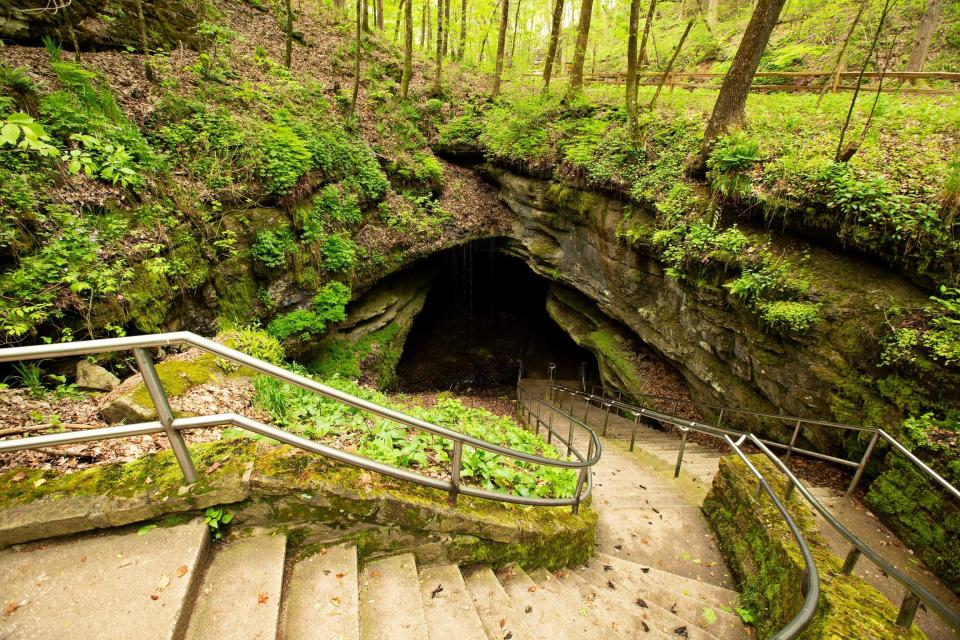Mammoth Cave is the most haze-polluted park in the country. Kentuckians deserve clean air.
On many days in Kentucky when the air is still, whiffs of dirty air, drifting from distant pollution sources, can be seen high in the sky. As I drive to my cabin in Green County, I can see haze from Bonnieville to Bowling Green and beyond. The air pollution behind this stems from distant power plants, which can drift hundreds of miles, affecting the Bluegrass State’s most treasured places.
Poor air quality is a persistent problem across Kentucky for our communities and green spaces. The same pollutants causing hazy air also affect Kentuckians’ health, worsening asthma, bronchitis and other respiratory illnesses, especially the thousands of residents who live near coal-fired power plants. Once a resident of Lexington, I was diagnosed with Chronic Obstructive Pulmonary Disease, in my early 50s. Now, I need an inhaler when spending time at my cabin in Green County. But when I travel to other parts of the country with better air quality, I find that I don’t need my inhaler. Though my case is mild compared to many, this is no way for Kentuckians to live, especially when something can be done to improve the situation right now.
Kentucky air quality could massively improve through new legislation
Through the Clean Air Act’s Regional Haze Rule, the Commonwealth of Kentucky has a once-in-a-decade chance to improve air quality state-wide. The Kentucky Division for Air Quality is over three years late in proposing a plan detailing how it will reduce haze pollution in certain protected wilderness areas and national parks like Mammoth Cave.
We should be the ones in charge: EPA, activists want to control Kentucky's energy future.
National parks are held to some of the highest standards of protection, and our national park should be no different. Just last year, Mammoth Cave National Park had over half a million visitors. People come to this unique place to bike, stroll and enjoy clear vistas and breathe in the crisp, fresh air. But too often, the clear skies that park visitors expect are obscured by a yellowish haze. Mammoth Cave is the most haze-polluted park in the country based on the volume of emissions making their way into the park’s boundaries, according to the National Parks Conservation Association’s analysis of sources likely impacting parks.

Plan proposed by the Kentucky Division for Air Quality is not enough
Unfortunately, the KY DAQ recently proposed a weak haze plan that would do little to hold polluters accountable, including coal-fired power plants, an aluminum smelter, paper-making operations and gas pipelines. The National Park Service has identified more than a dozen polluting facilities that the state should address in their plan, and NPCA has identified 18. Despite science and data pointing to the need for robust action, KY DAQ has chosen to review only two polluting facilities, deciding not to require any additional pollution controls to significantly cut emissions. In the current plan, KY DAQ effectively ignores over 100,000 tons of pollution spewing into Kentucky’s air annually.
We must push DAQ to develop a plan that protects our parks and people—not polluters. Ten years from now, as I sit outside my cabin, I want to know that I can take a deep breath without my inhaler. I want to look out into the beautiful wilderness without squinting through the haze; I want to enjoy time in Mammoth Cave without worry or fear. We all deserve that.

Hilary Lambert, the former executive director of Cayuga Lake Watershed Network, lived and worked in Lexington. Today she owns a cabin in Green County.
This article originally appeared on Louisville Courier Journal: KY national parks hurt by bad air quality, haze. We deserve clean air.

